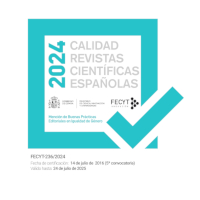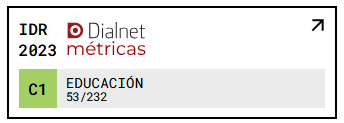Coordinación interinstitucional de los servicios de atención a la pequeña infancia en La Rioja
DOI:
https://doi.org/10.18172/con.582Keywords:
early intervention, infancy, interinstitutional coordinationAbstract
The aim of this work is knowing the state of the art of the coordination measures among the Early Infancy Intervention Centers in the La Rioja’s region. Materials and method: data was extracted by a mixed questionnary constructed “ad hoc” and administered to n= 47 professionals of Early Interventional Centres distributed according their geographical location: Rioja Alta, Rioja Centro, Rioja Baja. Significant differences among answers obtained was calculated using the SPSS program (p<0.005) in relation to the conceptual axis designed. Results show that: a) coordination among professionals is made by their own initiative in order to discuss individual treatments programmed; b) interventional procedures are best coordinated, significantly, among the professionals in the same interventional center; c) public resources distribution is differential, irregular and insufient relating to the geographical location; d) knowing of the working objectives and functions of other early interventional centers are unknown; e) there is a lack of organization among them, Conclusion: the current structure of the Early Interventional Centers in La Rioja is poorly organized; oficial regulated coordination is necessary.Downloads
References
Anguera, M. T., Blanco, A., Losada, J. L., Montilla, M.ª D. y De Armas M. (1995). Los profesionales del Sistema de Atención Social a la Infancia. Realidad y demandas. Madrid: Ministerio de Asuntos Sociales.
García Sánchez, F. A. (2002). Atención Temprana: elementos para el desarrollo de un Modelo Integral de Intervención. Bordón, 54(1), 35-52.
Grupo de Atención Temprana (GAT) (2000). Libro Blanco de la Atención Temprana. Madrid: Ministerio de Trabajo y Servicios Sociales. Real Patronato de Prevención y de Atención a Personas con Minusvalía.
Gutiez, P. (2005). Atención Temprana. En P. Gutiez, (ed.), Atención Temprana. Prevención, detección e intervención en el desarrollo (0-6 años) y sus alteraciones, (pp. 3-61). Madrid: Editorial Complutense.
Millá, M.ª G. (2003). Atención Temprana: Definición y objetivos. Minusval. Nº especial, marzo, 48-51.
O.M.S. (1999). Salud 21. El marco político de salud para todos de la Región Europea de la O.M.S. Madrid: Ministerio de Sanidad y Consumo.
Pegenaute, F. (Marzo, 2003). Centros de Desarrollo Infantil y Atención Temprana. Minusval. Nº especial, marzo, 63-66.
Soriano, V. (1999). Intervención Temprana en europa: Organización de Servicios y Asistencia a los Niños y sus Familias. Tendencias en 17 Países Europeos. Agencia europea para el Desarrollo de la Educación Especial. Edición española: traductor: Javier Velarte. Madrid: Real Patronato de Prevención y de Atención a Personas con minusvalía.
Ullman, S. y Lázaro, E. (2007). Coordinación entre centros escolares, atención temprana y familias. En M. Vidal (coord.), Estimulación Temprana (De 0 a 6 años). Desarrollo de capacidades, valoración y programas de intervención. Primera parte: Perspectiva histórico-científico-social de la estimulación temprana, (pp. 105-131). Madrid. CEPE.
Villuendas, M. D. (1989, Noviembre). Vida Psíquica y Atención Temprana. Fundamentos Psicopedagógicos, Metodológicos; Intervenciones y Recursos. Actas del Congreso Internacional de Educación Infantil. Madrid.
Downloads
How to Cite
Issue
Section
License
The authors retain copyright of articles and authorize Contextos Educativos. Revista de Educación the first publication. They are free to share and redistribute the article without obtaining permission from the publisher as long as they give appropriate credit to the editor and the journal.
Self-archiving is allowed too. In fact, it is recommendable to deposit a PDF version of the paper in academic and/or institutional repositories.












